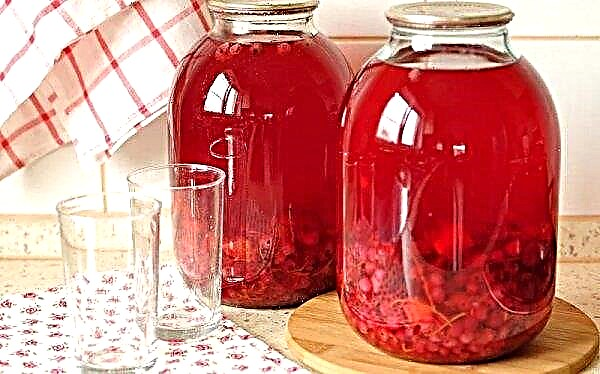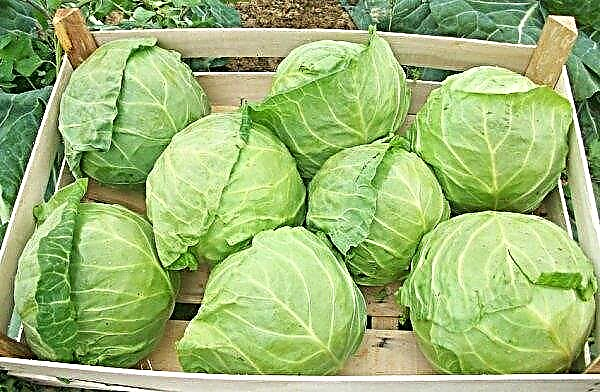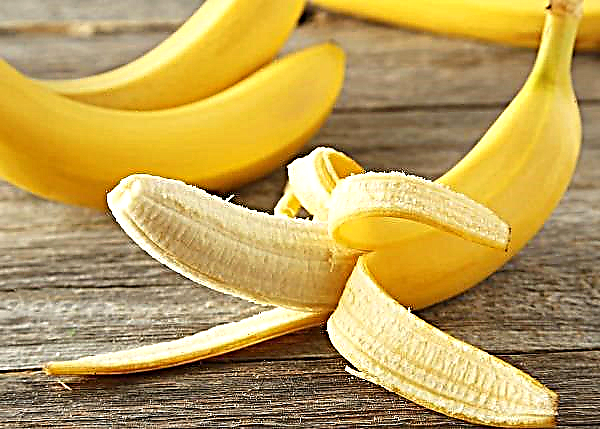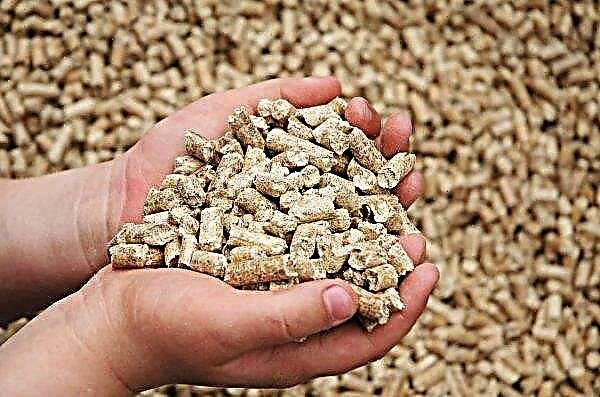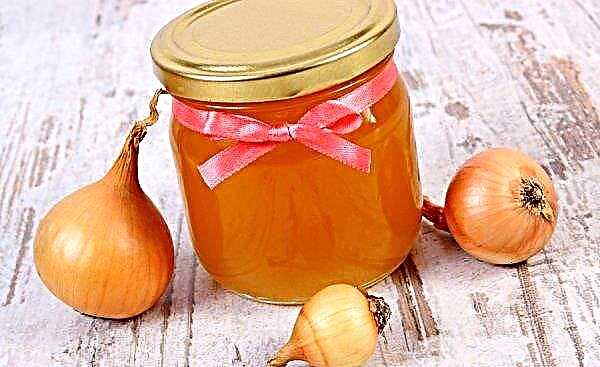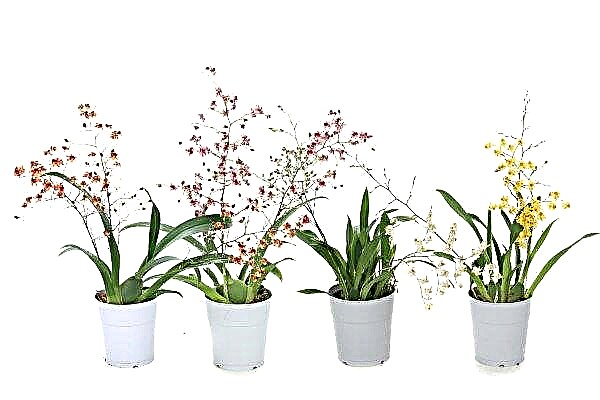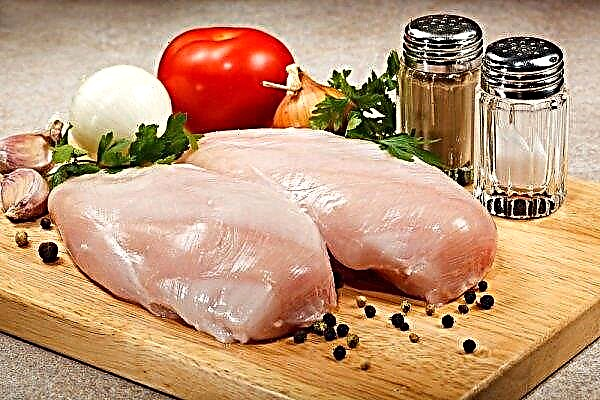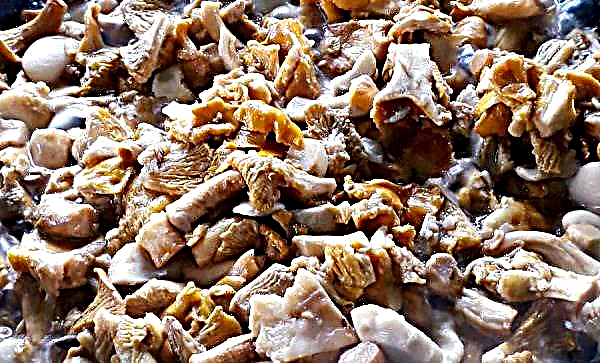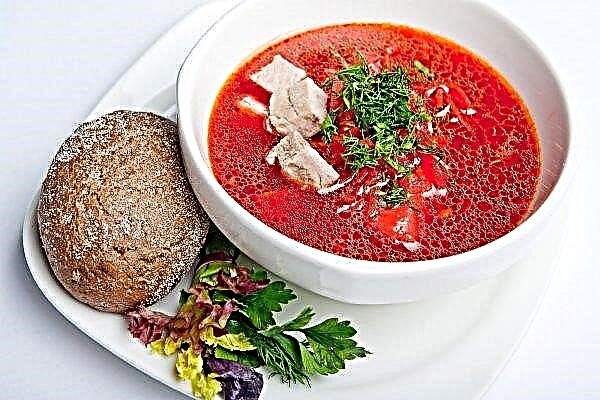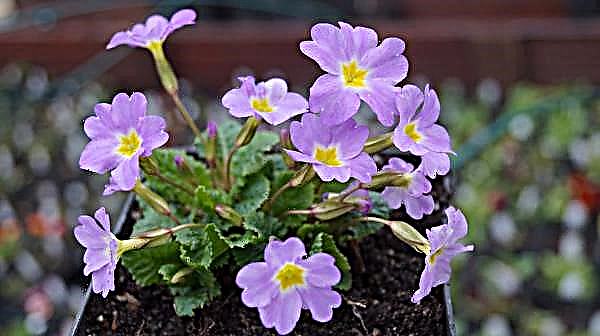Potatoes are one of the staple foods in many people's daily diets. One of the best types of this culture is the Farmer variety, which is distinguished by high productivity. At the same time, plants are unpretentious to growing conditions and require minimal maintenance. The main characteristics of this variety, its pros and cons, as well as the main methods and rules for planting potatoes, recommendations for caring for plants and tips for harvesting are presented in the article.
Origin and region of planting of the variety
Potato Farmer is a product of folk selection, so it can not be found in the list of officially registered varieties. This variety of tubers was obtained naturally as a result of many years of cultivation of potatoes by various farmers. The author and the exact date of the creation of the Farmer variety are unknown, but he is very popular among gardeners.
Did you know? The homeland of the potato is South America - there it was cultivated by the Indians of Peru 4,000 years ago.
This type of potato can be grown in any region with a temperate, continental or sharply continental type of climate, so it is common in Ukraine, the Republic of Belarus and in almost all regions of Russia.

The maximum yield indicators can be achieved when planting crops in regions with such climate features:
- temperature mode: +15 ... + 20 ° С;
- sunny and long summers;
- the presence of periodic, but short-lived rains;
- lack of sharp temperature fluctuations during the day.
Characteristic and Description
In the appearance of the Farmer plants, there are no significant differences from other types of potatoes, but tubers attract gardeners with their excellent commodity characteristics and good taste.
And the high yield and early ripening of the vegetable, combined with the unpretentiousness of the climate conditions allow us to grow this crop not only for personal purposes, but also on a large scale. More details about the main characteristics of the variety - further in the article.

Potato Description
Potato Farmer belongs to the table varieties - its tubers can be used in cooking for preparing various dishes, as well as for the production of chips. A distinctive feature of the bush is that its tops remain green for a very long time.
The description of this variety is presented below:
- The bush is medium in size and has an erect stem. Lateral branches are not very spreading.
- Small leaves of the plant are painted in saturated green color, and their edges are characterized by weak waviness.
- The corolla consists of several large flowers with white petals, but it looks compact. The berries are very small, and their number is small.
- The tubers have an elongated oval shape and medium size. The mass of each of them is approximately 90-110 g.
- Outside, root crops are covered with a smooth and thin skin, painted in a light yellow color. On its surface, small colorless eyes are noticeable.
- The creamy tuber pulp contains up to 12% starch. It has an excellent taste, does not darken for a long time in the open air and retains its shape well after heat treatment.

Ripening time
Potato farmer has a medium early maturity. When grown in areas with moderate climatic conditions, the crop of tubers can be obtained 2 months after sowing. If this variety is planted in a region with a warm climate, then the tuber ripening period is reduced to 1.5 months.
Important! In order to accelerate the maturation of potatoes and extend their shelf life, it is recommended to cut the tops of plants for a week or decade before the planned harvest.
Productivity
One of the indisputable advantages of the Farmer potato, attracting the attention of gardeners, is its guaranteed high yield. On average, from 1 hectare of area you can collect 200–230 centners of tubers with excellent appearance and taste.
The main characteristics of the yield of this variety include:
- friendly ripening of vegetable crops;
- from one plant, an average of 10-15 tubers are harvested;
- one-dimensionality is characteristic of fruits;
- in regions with a warm climate, crop productivity increases;
- the variety does not degenerate for 5-6 years.

Pros and cons of the variety
Potato Farmer has gained immense popularity among gardeners due to its many positive qualities that distinguish it from other varieties.
- The main advantages of culture are:
- early ripening of tubers;
- high productivity;
- excellent presentation;
- unpretentiousness to growing conditions;
- excellent taste of tubers;
- resistance to degeneracy;
- good keeping quality;
- a high percentage of starch and nutrients in potatoes;
- resistant immunity to most diseases and pests;
- the possibility of universal use in cooking.
- Among the few disadvantages of potato farmer gardeners include such qualities:
- susceptibility to late blight with prolonged exposure of tubers to the ground;
- exactingness to the nutritional composition of the soil;
- the need for moderate soil moisture;
- regular processing of beds from the Colorado potato beetle, cicadas and aphids.
Resistance to disease
If you select a suitable plot for growing Potato Farmer and adhere to the basic rules for caring for beds, then the plants show good resistance to common diseases and pests.

This variety is practically not afraid of such ailments as:
- potato cancer;
- fungal infections;
- viral diseases;
- golden nematode.
Due to the early ripening, the tubers of this variety are in the soil for a short time, therefore they are protected from late blight. But if you do not harvest the crop on time, then the risk of this disease increases. Also, plants are often attacked by the Colorado potato beetle, aphids and cicadas.
Cultivation agricultural
The Farmer variety is unpretentious to the growing conditions, but in order to achieve high yields for potato beds, you need to choose the right place and correctly carry out the planting procedure.
At the same time, it is important to take into account the exactingness of this culture for the composition of the soil, as well as carry out preliminary preparation of planting material in order to accelerate the emergence of seedlings and protect plants from possible diseases and pests. More about all of this later in the article.
The best place to land
Not only crop yield, but also the rate of ripening of tubers, as well as the resistance of plants to infections and pests, depends on the right choice of place for growing a variety.
Therefore, the selected site must meet the following requirements:
- well lit by the sun - this will accelerate the growth of tops and will contribute to uniform heating of the soil for rapid ripening of tubers;
- lack of cold drafts - they weaken the immunity of the plant and can cause late blight;
- high groundwater occurrence - help potatoes to survive long periods of drought in hot climates;
- suitable precursors for potatoes - legumes and grains, cabbage, cucumbers, carrots, peppers and garlic. It is not recommended to grow this crop after solanaceous crops.
 Re-planting potatoes in the same area is possible only after 3 years.
Re-planting potatoes in the same area is possible only after 3 years.
Soil type
For the cultivation of this crop, a site with light and fertile soil, which is based on black earth or sand, is best suited. Such a substrate passes air, water and solar heat well to tubers, which favorably affects the ripening of the crop and the size of the vegetables.
It is not recommended to plant planting material in dense and heavy soil - it will be difficult for weak sprouts to break through it and crop germination will deteriorate. If the soil is not loose enough and contains a lot of clay, you can add sawdust, humus or sand to it.
Important! To reduce the risk of diseases of the potato farmer, before planting it is recommended to cultivate the land in the area with a solution of fungicides.
Before planting potatoes, the Farmer is recommended to prepare the soil using the following actions:
- remove all plant debris from the ground in the autumn - pests and pathogens may remain on them;
- dig up the soil before the onset of frost to a depth of about 30 cm - as a result of this procedure, insect larvae wintering in the ground will be on the surface and die from the cold;
- in spring, after the snow melts, loosen the soil surface in order to better retain moisture in it;
- add organic or mineral fertilizers to the soil a few days before planting - you can use humus (5 kg per 1 m² of area) or ready-made complex preparations.

Dates for boarding
Potato farmer can be grown from seedlings by seedling or by planting tubers directly into the open ground.
Depending on the chosen method, the timing of planting the crop is also determined:
- sowing seeds for seedlings is carried out in late March, so that its age at the time of transplantation to the site was at least 30 days;
- young potato sprouts are planted in a permanent place in the first half of May - with a minimum air temperature of at least + 10 ° C;
- tubers can be planted in an open area at the beginning or in the middle of May - while the outdoor temperature should be +10 ... + 15 ° С.
Preparing planting material
Potato farmer is recommended to grow seedlings from seeds. You can collect them yourself from the green berries of plants that form after the fertilization of the flowers of the bush, or purchase ready-made planting material from a trusted seller.

This method of growing potatoes allows you to improve its marketability and increase productivity, since the seeds better preserve the genetic information of the variety than tubers.
The process of preparing planting material and the rules for growing seedlings are presented below:
- Spread the seeds on a plate and pour them with water for 2 days. It is recommended to keep the container at room temperature during the day, and put it in the refrigerator for the night.
- After soaking, spread the seeds on a piece of clean, damp cloth and put them in a warm place for germination.
- Prepare a large container and fill it with loose soil. You can use ready-made store soil for growing seedlings or prepare the substrate yourself from 4 parts of peat, 2 parts of garden soil and 1 part of sand.
- Spread the sprouted potato seeds evenly on the soil surface and sprinkle them on top with a thin layer of loose earth or sand. After that, slightly water the soil.
- Cover the container with the seeds planted in film or glass. Put the container in a warm and well-lit place, removing the shelter for ventilation for 10-15 minutes a day.
- When the topsoil is dried, carry out moderate watering. After emergence, remove the film and keep seedlings away from drafts at an air temperature of +20 ... + 25 ° С.
- 2 weeks after seed germination, pickle the seedlings in separate containers. To protect against diseases, it is recommended, at the same time, to treat the soil around the sprouts with the Fitosporin solution.
- To carry out moderate watering of seedlings, so that the earth in pots is always slightly moist. When 4-5 leaves are formed on plants, they can be transplanted to a permanent place.
- A week before transplanting to the site, begin hardening of seedlings. For this, the sprouts are taken out to the street and kept at a temperature of +10 ... + 15 ° C for 3-4 hours. Every day, the time spent by young plants in the open air is gradually increasing.
Farmer can also grow potatoes from seed tubers. For better germination, before planting, they are first germinated in a well-lit and warm place for 7-10 days.
To reduce the risk of diseases and pests, it is recommended to treat the planting material with a weak solution of potassium permanganate or the drug "Prestige".

Landing pattern
A few days before planting seedlings or seed tubers of Farmer potatoes on the site, you can additionally warm the soil by covering it with a transparent film on top.
After that, you need to mark even rows on the soil surface, placing them at a distance of 60 cm from each other. Small holes are dug in each row at intervals of 20–25 cm.

The algorithm for planting Farmer potato seedlings on the plot is presented below:
- Pour a handful of humus and onion husks at the bottom of each depression. Pour a little water into the well.
- Carefully remove the potato seedling from an individual container with an earthen lump. Submerge it in the hole so that 3 sheets remain above the surface of the soil.
- Sprinkle plant roots with loose soil. Cover the beds with a film on top, so that the seedlings quickly take root in a permanent place.
- Shelter needs to be lifted daily for ventilation. After a few days, when the plants adapt to open air conditions, the film can be removed.
Planting tubers is carried out in a similar way. In this case, the sprouted planting material is placed in the hole so that the shoots are directed upwards.
Further planting care
If the potato was planted according to all the rules, then further care for the beds does not require a gardener much time and effort.
First of all, plants need to provide a sufficient amount of moisture and nutrients in the soil, since crop productivity and commercial quality of tubers depend on these two factors. It is equally important to timely combat diseases and pests in order to avoid crop losses.

Fertilizer and watering
Potato farmer has early ripening, so root crops are usually harvested before the onset of intense summer heat. But for the rapid growth of tops and the formation of a large number of large tubers, drying of the soil should not be allowed. A regular application of fertilizers will help to improve the taste characteristics of potatoes and increase its immunity.
Did you know? The largest potato in the world weighed almost 4 kg and was grown in 2010 by a farmer from Nottinghamshire (England).
The basic rules for watering and top-dressing Farmer plants are listed below:
- watering is carried out as the top layer of the soil dries up;
- about one adult bush is recommended to spend about 3 liters of water;
- it is best to water the beds in the evening, so that the water is absorbed into the ground and does not evaporate under the sun;
- for uniform irrigation of the area, it is recommended to use a drip irrigation system;
- the first feeding is carried out 2-3 weeks after planting - the plants are watered with a liquid solution from bird droppings and water (the components are mixed in a ratio of 1: 8);
- the second time the beds are fertilized during flowering, using ready-made mineral fertilizers with magnesium, potassium and phosphorus;
- the last feeding is done during the formation of root crops - the bushes can be treated with an aqueous solution of manure and ammonium sulfate (1 l of manure and 1.5 tbsp. l ammonium per 10 l of water).

Pest and Disease Control
This variety shows good resistance to most infections and pests, but is susceptible to attack by some insects. It is possible to prevent mass infection of potato plantings with the help of timely preventive measures, and when diseases or pests occur, it is important to notice the problem in time and begin the correct treatment.
Potato farmers can be threatened by such insects and diseases:
- Colorado beetle. The insect has small sizes and striped wings. The beetle lays eggs on the leaves of the potato, from which pink larvae appear. They feed on the delicate pulp of potato tops and destroy the green mass of the plant, causing its death. With a small number of insects and larvae can be collected manually. But with a massive lesion, it is recommended to use special drugs (for example, Prestige, Aktara).
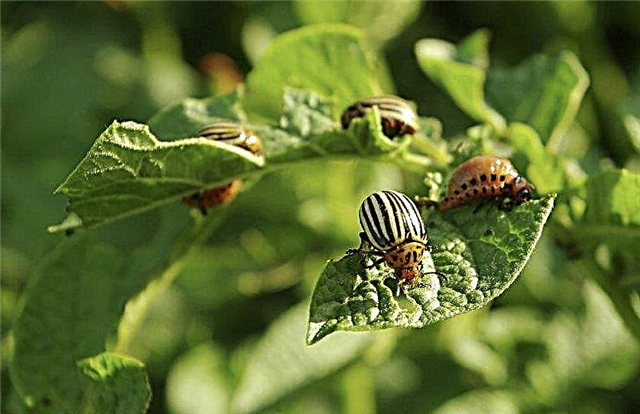
- Aphid. These small green insects live on the surface of potato leaves and suck out the juice from them. At the same time, on the surface of the bush you can see a sticky coating, which can cause the appearance of fungal diseases. Over time, the tops of the plants begin to turn yellow, and the bush dies. To combat aphids, use a decoction of onion husks (200 g per 2 liters of water) or insecticides (for example, "Actellik").
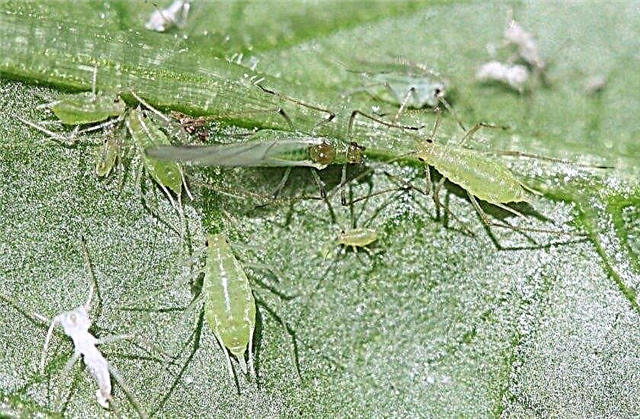
- Cicadas. The insect has a small size and a green color. This pest drinks juice from the stem and leaves of the potato, as a result of which the bush turns yellow and dries, and various infections can penetrate through the damaged areas. To combat insects, special chemicals are used (for example, Karate Zeon).

- Tuber late blight. An infection can infect potatoes as a result of prolonged exposure to soil, especially during rainy and cool weather. Dark spots appear on the tubers, which eventually increase in size and lead to rotting of the tuber. If a disease is detected, the diseased plant must be immediately removed from the site. The remaining plantings are treated with antifungal drugs (for example, "Ridomil").
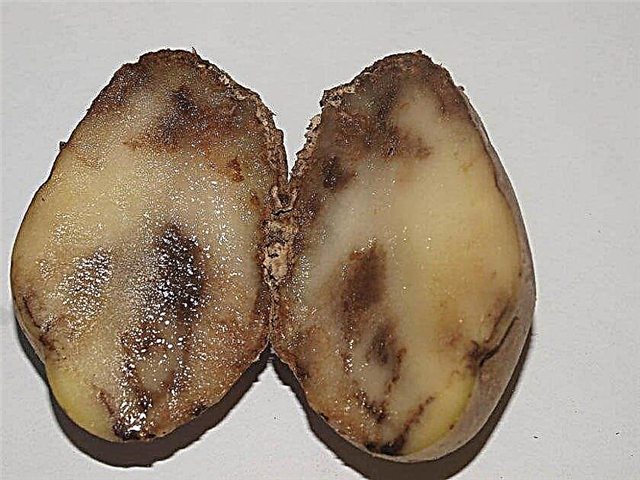
To prevent all of these difficulties, it is enough to perform such simple actions:
- observe crop rotation;
- perform proper preparation of planting material and soil;
- adhere to recommendations for watering and fertilizing;
- comply with the recommended planting pattern;
- regularly loosen the soil around the bushes and remove weeds;
- carry out preventive treatment of beds with fungicides and pesticides in accordance with the instructions indicated on the package.
Harvesting and storage
The ripening time of the Farmer potato depends on the method of cultivation and the climate of a particular region, so the harvest of ripe tubers is harvested from late July to mid-August. The main sign, which indicates the ripening of the vegetable crop, is the mass yellowing of the tops of plants.

The basic rules for the collection and storage of a Farmer potato crop are listed below:
- potato harvest is best harvested on a warm and sunny day;
- each bush is carefully dug up with a shovel or pitchfork, and then manually pick the potatoes from the ground;
- tubers are cleaned from the ground and put in baskets, protecting them from shock and mechanical damage;
- before laying for storage, the tubers are dried for several days in the shade under a canopy;
- after drying, the potatoes are sorted by size, and damaged copies are removed;
- It is recommended to store potatoes at a temperature of +2 ... + 5 ° C in a dark and dry room with good ventilation.
Important! In favorable conditions, Farmer potatoes can be successfully stored until spring, and the variety has a shelf life of at least 90%.
Potato Farmer is always popular among many gardeners due to its positive characteristics that distinguish it from other varieties. Using the tips and recommendations listed in this article for growing this crop, you can get an early harvest of selected potatoes with excellent taste and attractive appearance.





